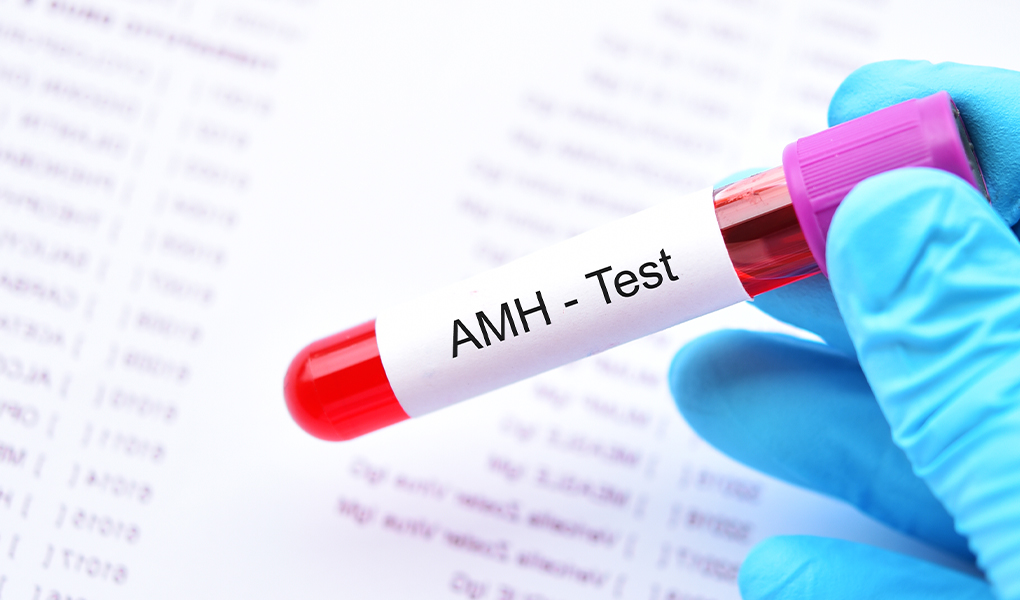The human body naturally produces anti-Mullerian hormone or AMH in the blood. This hormone plays a key role in the development of reproductive organs in an unborn baby. When a woman becomes pregnant, her infant in the womb starts developing reproductive organs in the first few weeks. The unborn baby has XX (female) or XY (male) genes. However, male infants have higher AMH levels, preventing the development of female organs in the womb. In rare cases, a male infant does not have enough anti-Mullerian hormones, which can cause the development of both sex organs in the baby, a condition called ambiguous genitalia or intersex.
For female infants, a low AMH level is required for developing sex organs. However, this hormone becomes crucial once they reach the age of puberty as their body starts making eggs and preparing for reproduction. So, in women, the AMH levels can provide information about their ability to conceive. An AMH blood test is also used to help doctors detect menstrual disorders and monitor treatment in case of ovarian cancer.
What is Anti Mullerian Hormone (AMH) Test
Also known as the Mullerian-inhibiting hormone and AMH hormone test, it is a blood test that helps doctors to evaluate a woman’s egg count or ovarian reserve. In women, ovaries can produce & store a number of eggs throughout life, and AMH levels are related to eggs that are left for fertilisation. As the anti-Mullerian hormone naturally declines with age, the chance of fewer or no eggs available for fertilisation are high.
Sometimes, women face problems to conceive. A Mullerian hormone test can help doctors understand their potential for conceiving. In addition, the AMH test can be also prescribed for the following reasons:
- To detect polycystic ovary syndrome (PCOS;
- To find out the causes of menstrual disorders, such as early menopause or amenorrhea;
- To monitor treatment for women with certain types of ovarian cancer;
- To check infants with genitals unidentified as male or female;
- To diagnose the issue in females who have not started menstruating by the age of 16;
- To detect conditions in women who have missed periods for months;
- To find out the reasons behind severe acne and extreme hair growth in the body of women;
How an AMH Test is Done
The test procedure is the same as other blood tests where a healthcare professional takes a small blood sample from a vein in one of the arms using a sharp needle. The process takes only a few minutes. As the level of these hormones remains stable throughout the cycle, the doctor can prescribe an AMH test at any time. Also, there is no special preparation needed for this test.
What Do the AMH Test Results Mean
If the test shows the level of hormones in their normal range, it means a woman has a good chance of getting pregnant. However, the high level of AMH may indicate PCOS and polycystic ovary syndrome. While there is no cure for this condition, it can be managed with medicines and lifestyle changes.
If the AMH test report shows a low level of this hormone, the woman may face trouble conceiving. Also, it may be a sign of menopause in women in the 45 to 50 age group.
Reasons for Low AMH Level
- Age
- Genetic factor
- Endometriosis
- Auto-immune diseases
- Excessive smoking
- Cancer treatment
- Women having birth control pills
- Environmental conditions like pollution
Factors that can Affect an AMH Test
An AMH test may be affected by many external factors. So, before prescribing a test, the doctor may ask about a woman's family history and lifestyle choices. Some of the factors affecting the test include:
- Vitamin D deficiency
- Obesity
- Having received chemotherapy treatment
- Ovarian surgery in the past
- Taking contraceptive pills
- Family history of polycystic ovary syndrome
- Having certain genetic mutations that affect the chances of developing breast or ovarian cancer
AMH levels determine the ovarian reserve or the number of eggs women have at the time of the test. It is advised to follow a doctor’s recommendation for the treatment for the low AMH levels and further guidance about fertility.













 7982100200
7982100200



















 To reach our help desk call 9213188888
To reach our help desk call 9213188888.png)
Comments